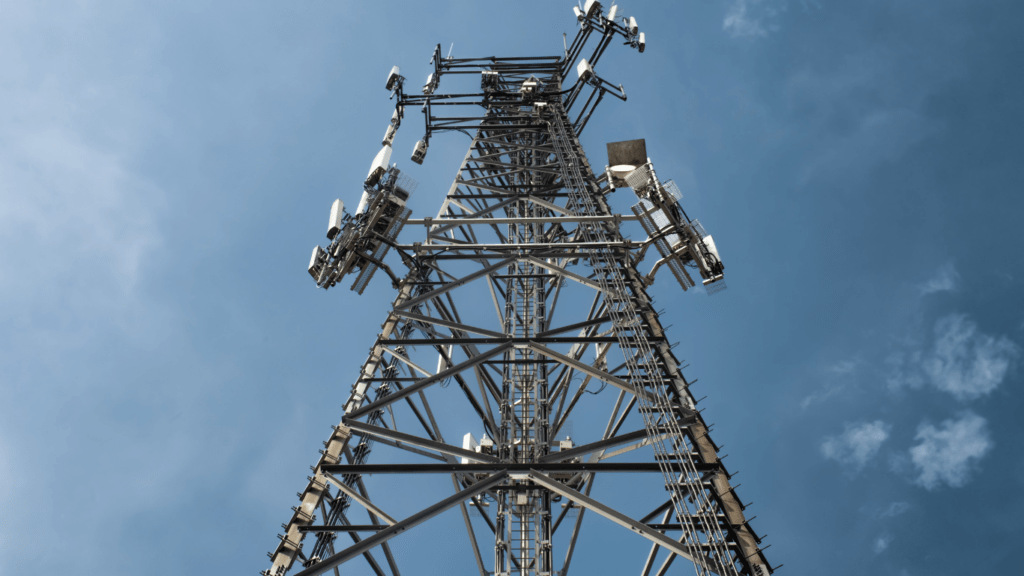In the ever-evolving landscape of technology, the emergence of Wi-Fi 6 has sparked a new era of connectivity. As an expert in the field, I’ve witnessed firsthand the transformative impact of this latest wireless standard. Wi-Fi 6 isn’t just an incremental improvement; it’s a game-changer, offering faster speeds, increased capacity, and more efficient performance.
With my years of experience, I’ve delved into the intricacies of Wi-Fi 6 to understand its potential fully. This article explores how Wi-Fi 6 is revolutionizing the way we connect, stream, and work online. Join me as we uncover the unparalleled benefits and exciting possibilities that Wi-Fi 6 brings to the table.
Evolution of Wi-Fi Technology
Exploring the evolution of Wi-Fi technology reveals a fascinating journey of advancements that have shaped our digital connectivity. From the early days of dial-up internet to the seamless wireless experiences we enjoy today, Wi-Fi technology has undergone significant developments to meet the ever-growing demands of users worldwide.
- Wireless Standards:
The evolution began with the introduction of the 802.11 standard in the late 1990s, paving the way for wireless networking. Subsequent iterations such as 802.11a, 802.11n, and 802.11ac brought enhancements in speed, range, and overall performance. The latest standard, Wi-Fi 6 (802.11ax), represents a leap forward in technology, offering improved efficiency and faster speeds. - Enhanced Features:
Wi-Fi 6 introduces innovations like Orthogonal Frequency Division Multiple Access (OFDMA) and Target Wake Time (TWT) to optimize data delivery and reduce latency. These features enable more efficient use of available bandwidth, accommodating multiple devices simultaneously without compromising performance. - Increasing Demands:
The evolution of Wi-Fi technology is driven by the escalating demands of modern applications. Streaming high-definition content, online gaming, video conferencing, and IoT devices require robust and reliable connectivity, which Wi-Fi 6 delivers effectively. - Future Prospects:
As the digital landscape continues to expand, the evolution of Wi-Fi technology is poised to meet the challenges of tomorrow. Technologies like Wi-Fi 6E, which operates in the 6GHz spectrum, promise even higher speeds and lower latency, shaping the future of wireless connectivity.
The evolution of Wi-Fi technology showcases a remarkable progression towards faster, more efficient wireless connectivity, empowering users to embrace the digital age with confidence and reliability.
Key Features of Wi-Fi 6
Wi-Fi 6, also known as 802.11ax, boasts several key features that set it apart from its predecessors. Let’s explore two fundamental aspects that make Wi-Fi 6 a game-changer in the realm of wireless connectivity.
Orthogonal Frequency Division Multiple Access (OFDMA)
In Wi-Fi 6, OFDMA plays a crucial role in enhancing efficiency by allowing a single channel to be divided into multiple smaller sub-channels. This enables simultaneous communication with multiple devices, making data transmission more efficient and reducing latency. It’s like having multiple lanes on a highway, ensuring smoother traffic flow and faster delivery of data to connected devices.
Target Wake Time (TWT)
Target Wake Time (TWT) is another innovative feature of Wi-Fi 6 that helps improve battery life in connected devices. By allowing devices to schedule specific times for data transmission and reception, TWT reduces the need for devices to stay awake constantly, conserving power and maximizing efficiency. This feature is particularly beneficial for IoT devices and other battery-powered gadgets, ensuring prolonged usage without compromising on connectivity speed.
Benefits of Wi-Fi 6
Enhancements in Wi-Fi technology come with several benefits, revolutionizing the way we connect and interact in the digital landscape. Some advantages of Wi-Fi 6 include:
- Improved Speed: Wi-Fi 6 provides faster data transfer speeds, offering up to 9.6 Gbps, making it ideal for bandwidth-intensive activities like online gaming, 8K streaming, and large file transfers.
- Increased Device Capacity: With the ability to connect to multiple devices simultaneously, Wi-Fi 6 is designed to handle crowded networks more efficiently. This means smoother connectivity even in busy environments like offices, airports, or smart homes with numerous connected devices.
- Enhanced Efficiency: The introduction of OFDMA in Wi-Fi 6 allows for better utilization of available bandwidth by dividing channels into smaller sub-channels. This feature enables more efficient data transmission, reducing congestion and improving overall network performance.
- Extended Battery Life: Target Wake Time (TWT) in Wi-Fi 6 enables devices to regulate when and how frequently they wake up to send or receive data. By scheduling specific transmission times, devices can conserve power, leading to longer battery life, especially crucial for IoT devices that require low energy consumption.
- Better User Experience: Wi-Fi 6 offers a more reliable and stable connection, reducing latency and providing a seamless browsing and streaming experience. Users can enjoy improved performance for real-time applications like video calls, online gaming, and video streaming.
Wi-Fi 6 brings a host of benefits that enhance connectivity, efficiency, and user experience, marking a significant advancement in wireless technology for the modern digital era.
Comparison with Previous Wi-Fi Standards

Expanding on the advancements in Wi-Fi 6 compared to previous standards, let’s delve into the key improvements that set Wi-Fi 6 apart.
- Speed: Wi-Fi 6 offers a significant boost in speed compared to its predecessors. With data transfer rates reaching up to 9.6 Gbps, it outperforms earlier versions, ensuring faster downloads, smoother streaming, and quicker browsing for users.
- Device Capacity: One of the standout features of Wi-Fi 6 is its increased device capacity. This standard can handle multiple connections simultaneously without compromising performance, addressing the growing demand for connectivity in homes, offices, and public spaces.
- Efficiency: Wi-Fi 6 introduces OFDMA, which optimizes bandwidth utilization by dividing channels into smaller sub-channels. This allows for more efficient communication with multiple devices at the same time, reducing latency and improving overall network performance.
- Battery Life: Target Wake Time (TWT) in Wi-Fi 6 plays a crucial role in conserving power. By enabling devices to schedule specific transmission times, TWT helps extend battery life, particularly beneficial for IoT devices that rely on wireless connectivity.
- User Experience: With reduced latency and enhanced efficiency, Wi-Fi 6 provides a seamless browsing and streaming experience. Users can expect smoother connectivity, improved performance, and a better overall wireless experience compared to older Wi-Fi standards.
In essence, Wi-Fi 6 represents a leap forward in wireless technology, offering faster speeds, increased capacity, enhanced efficiency, prolonged battery life, and an improved user experience. It stands as a testament to the continuous evolution of connectivity solutions in the digital era.
Future Applications of Wi-Fi 6
Wi-Fi 6’s advancements are revolutionizing connectivity, paving the way for a myriad of future applications across various industries and daily activities. With its increased speed, expanded capacity, and enhanced efficiency, Wi-Fi 6 is poised to transform the digital landscape in the coming years.
- Smart Cities: In the future, Wi-Fi 6 will play a vital role in the development of smart cities. Its ability to support a massive number of connected devices simultaneously makes it ideal for applications like smart traffic management systems, environmental monitoring, and public safety initiatives. By leveraging Wi-Fi 6 technology, cities can optimize their operations, improve efficiency, and enhance the overall quality of life for residents.
- Healthcare: The healthcare industry stands to benefit significantly from Wi-Fi 6’s capabilities. With the need for seamless connectivity between medical devices, patient records, and healthcare professionals, Wi-Fi 6 can ensure reliable and secure communication channels. This will enable real-time monitoring, telemedicine services, and improved patient outcomes through enhanced connectivity.
- Education: Wi-Fi 6 will revolutionize the way education is delivered and accessed. With the ability to handle multiple connections efficiently, schools and universities can create smart classrooms equipped with interactive devices and online learning platforms. Students and teachers will experience seamless connectivity, enabling collaborative learning experiences and innovative teaching methods.
- Retail and Hospitality: In the retail and hospitality sectors, Wi-Fi 6 will enhance customer experiences and streamline operations. With faster speeds and increased capacity, businesses can implement immersive shopping experiences, personalized services, and seamless payment solutions. Additionally, Wi-Fi 6 can support IoT devices for inventory management, tracking customer preferences, and optimizing operational efficiency.
- Industrial IoT: The industrial sector will benefit from Wi-Fi 6’s efficiency and reliability in powering Industrial Internet of Things (IIoT) applications. With its support for a large number of connected devices and reduced latency, Wi-Fi 6 can enable smart manufacturing processes, predictive maintenance systems, and real-time monitoring of equipment. This will lead to increased productivity, cost savings, and improved decision-making in industrial operations.
Wi-Fi 6’s future applications are vast and diverse, promising to redefine connectivity across various sectors. By leveraging the speed, capacity, and efficiency of Wi-Fi 6, industries and daily activities will experience a paradigm shift towards enhanced connectivity, seamless communication, and optimized operations in the digital age.



